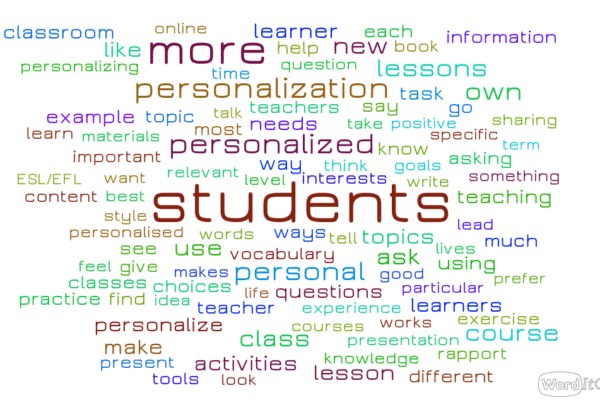Bite-sized flipped classroom (1)
You are a student in a classroom full of them. You are all seated in a circle and the teacher is standing in front of you. The teacher asks a question. Silence. Ok, thinking time is beneficial, you think. One minute later, silence remains, until the teacher says ‘I won’t say a word before you say it”, followed by another full minute of silence. Finally he says “if you haven’t read the text, there won’t be a lesson today. You can go home.” I do not know if it has ever happened to you either as a student or as a teacher. It happened to me when I was at university – the teacher was actually one of our professors there. It felt strange to us, students, and to me personally it was a shock. At that point I saw I was in trouble. Why doesn’t he teach how he is supposed to do?, said I. Next classes I would always say something, even if I had read one single line of what was assigned. I was just avoiding embarrassment.
Some weeks later, another professor spent her 2-hour lesson teaching us an unusual subject: how to study. According to her lesson, we should pre-read some material before the lessons, write questions and comments and share them in class. After class, we should read that again and make new notes and then write a summary. At the beginning I thought it was crazy. To be honest this plan as a whole was nothing but a dream until my last days at university. However, some of the steps suggested made clear what it was about: maximize our mediated, guided time to solve problems and engage in the real use of the content taught.
I started realizing that I was better able to discuss the topic of the lessons if I had read the material beforehand, even if not complete. To have an idea before the lesson of what was about to happen gave me a head start every class. When I had a project to carry on or a test to take I could perform or prepare myself better.
Of course this context is quite common at university where students are expected to be mature, independent and autonomous. The point is: are these abilities innate or do we have to learn them? Why was I so shocked by that first professor? Could I have been trained before that?
We are not born proficient learners. We need to be trained and develop habits. One habit that those teachers were trying to teach me was to take my questions to class, not home. Why is that? Teacher-student interaction is relatively rare and expensive – it needs everybody to commute to school (or wherever the class is), spend time and money on transportation, there is the teacher’s wage, etc. We cannot afford to have this time being spent on what students could do at home on their own time and pace?: read a text or watch a video with expository content.
The principle is simple: class time should be spent on getting questions out of the way and putting new knowledge into practice, applying it to real-life situations. This is the basic assumption of a flipped classroom. The advantages of such a method are numerous (Lo & Hew, 2017): more student-centred lessons, increase in engagement, promotion of communicative skills, increase in students’ autonomy, among others. If this is done through the internet, the benefits can extend to engaging students with multimedia, interactive input. This online feature, however, is not mandatory. Remember my professors who inverted their lessons just by telling us to read texts in print in advance, with no technology involved.
On the other hand, this practice can be better said than done. During my CertTESOL, one of our tutors – a very experienced and innovative teacher who I truly admire – admitted not to like the concept of flipped classroom due to one simple, almost uncontrollable reason: the teacher needs to rely on students’ doing their pre-class tasks; otherwise the class might be ruined. Recalling my extreme case, you remember what happened to my university colleagues and I when we did not do them – there was no lesson.
If I may suggest some simple ways to implement the principles of a flipped classroom, without risking your lesson and without too much workload on the part of the teacher or the student, here they are:
– revising content from the previous class: we often start a lesson by revising the content practised the lesson before. For instance, if you teach telling events in the past, before the next lesson, you can send a message to your students via whatsapp or email with a series of images or emojis and ask them some questions, such as “what do the images/emojis describe?” They start the next lesson by comparing in pairs the answers they have prepared at home.
– marking compositions: it is also an opportunity to maximize your class time (and your time to work on the syllabus and get more from writing tasks). If you receive you students’ compositions on paper, how many lessons after that do you return them? If you teach once a week, chances are that the students will not have the chance to consider their mistake and rewrite it in a final version before they have to write another composition. One option is to have their texts on a document editor that provides a revision tool. While you use this tool to mark the compositions, we can use a screen recorder tool to show what you are doing and explain orally why you are doing that. Your student gets this video, has a better idea of what to do and can send you their final version on the same day. None of you had any extra work.
– arousing interest in the topic of the lesson: I am positive most lessons have one moment at their first minutes devoted to arousing students’ interest in the topic to come. What if you sent students a message with a short task, a question or an image before the lesson and asked them some questions about it? Best case scenario: students will dive into it before the lesson and your lead-in will be a storm of relevant content. Worst case scenario: nobody opens your message and you will have to show it at the beginning of the lesson while asking the questions, just like you would anyway.
These are examples of strategies to make students use their time out of the classroom to increase their performance during their lessons. All of them cost very little time, little adaptation in terms of technology compared to what many teachers currently use and little (if any) previous instruction to students on this kind of homework. Bit by bit, creating such habits will help you take more from students during your lesson and also develop more autonomous students.





